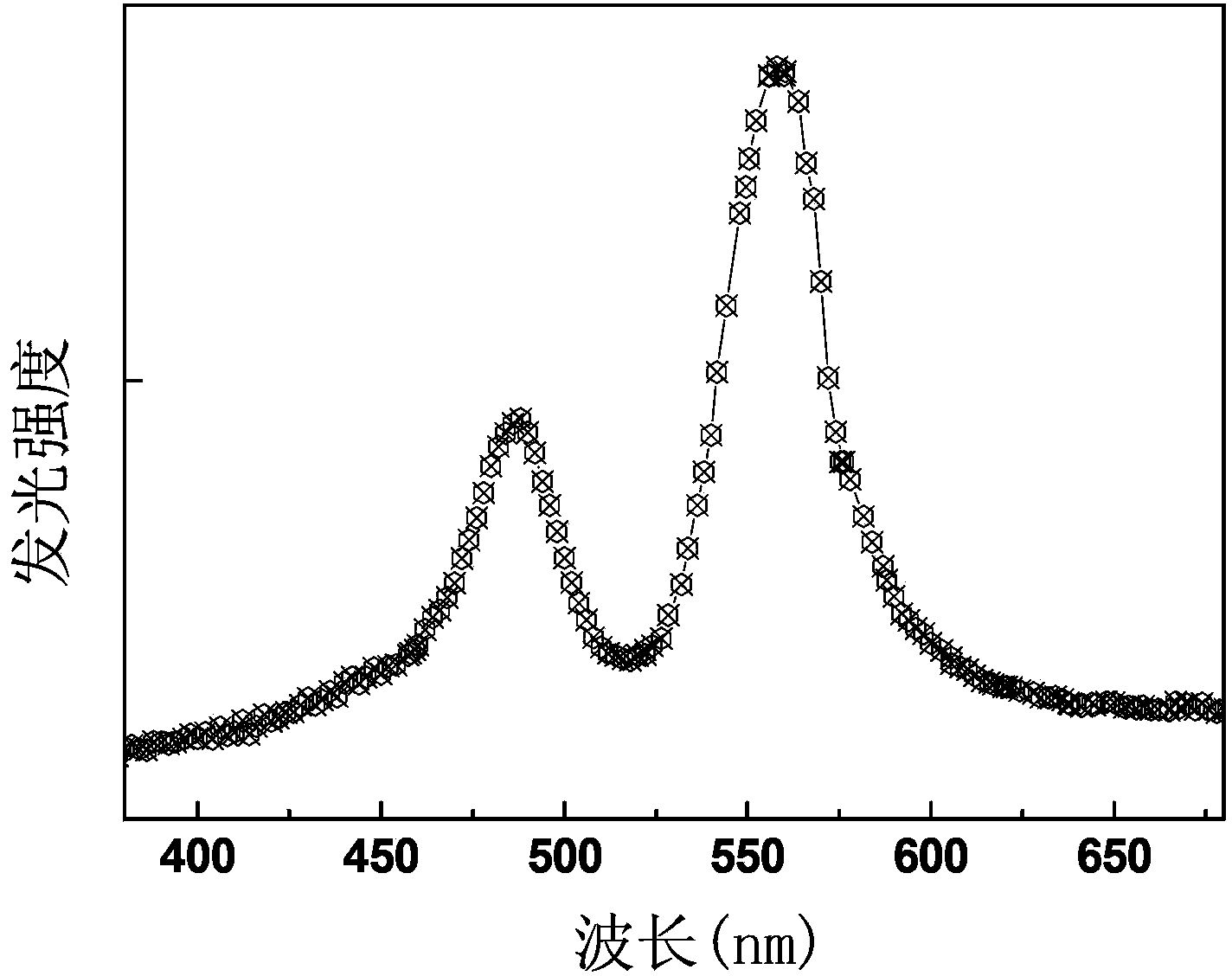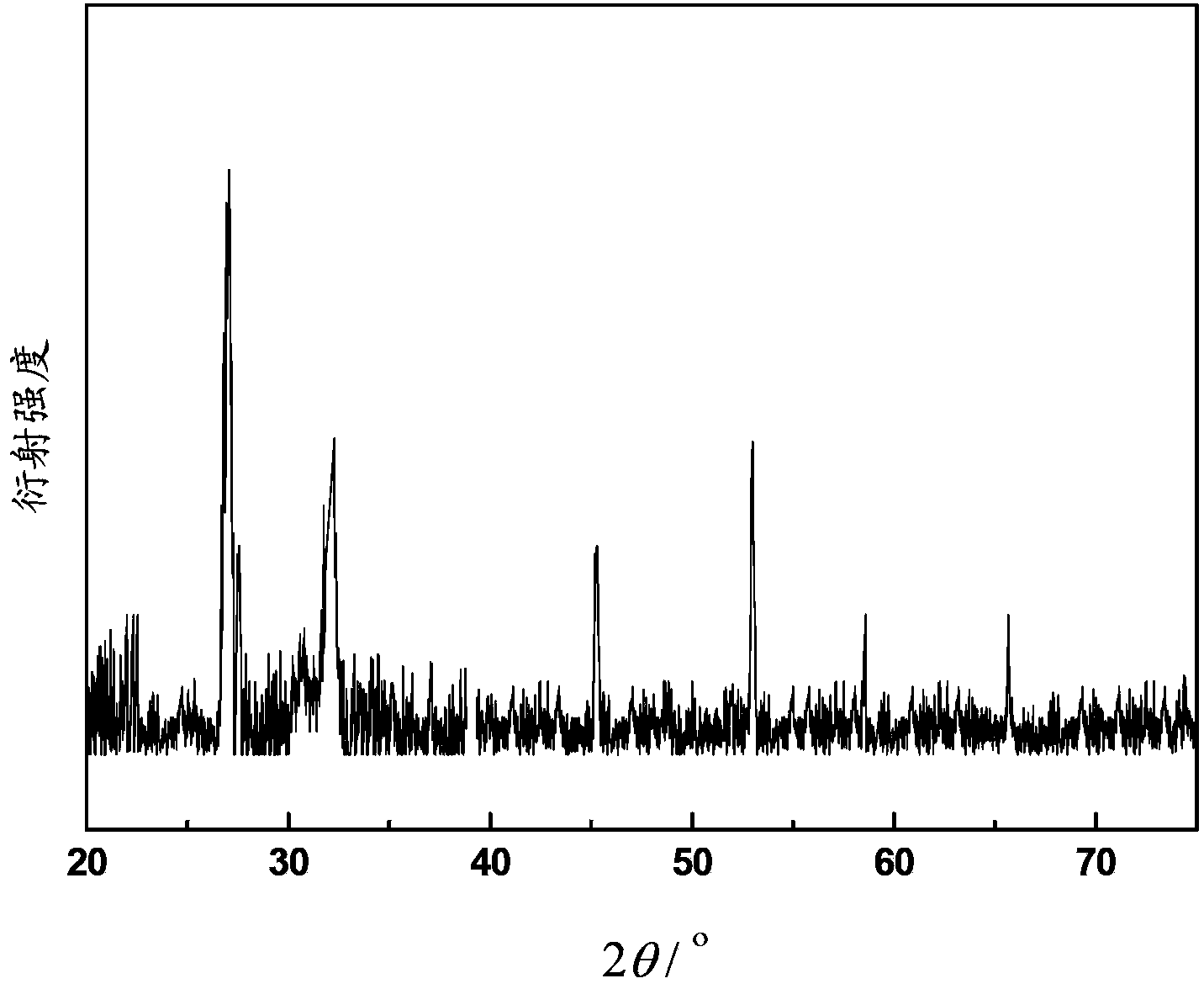Cerium and terbium codoped borophosphate light-emitting film as well as preparation method and application of cerium and terbium codoped borophosphate light-emitting film
A technology of borophosphate and luminescent thin films, applied in the field of thin film electroluminescent devices and their preparation
- Summary
- Abstract
- Description
- Claims
- Application Information
AI Technical Summary
Problems solved by technology
Method used
Image
Examples
preparation example Construction
[0031] The preparation method of the above-mentioned cerium-terbium co-doped borophosphate luminescent film comprises the following steps:
[0032] Step S11, loading the substrate into the reaction chamber of the chemical vapor deposition equipment, and setting the vacuum degree of the reaction chamber to 1.0×10 -2 pa~1.0×10 -3 pa.
[0033] In this embodiment, the substrate is indium tin oxide glass (ITO). It can be understood that in other embodiments, it can also be fluorine-doped tin oxide glass (FTO), aluminum-doped zinc oxide (AZO) or indium-doped glass. zinc oxide (IZO); the substrate was ultrasonically cleaned with toluene, acetone and ethanol for 5 minutes, then rinsed with distilled water, air-dried with nitrogen, and sent to the reaction chamber.
[0034] Preferably, the vacuum degree of the reaction chamber is 4.0×10 -3 Pa.
[0035] Step S12 , heat-treating the substrate at 600° C. to 800° C. for 10 minutes to 30 minutes.
[0036] Step S13, adjusting the temper...
Embodiment 1
[0068] The substrate is ITO glass, which is ultrasonically cleaned with toluene, acetone and ethanol for 5 minutes, then rinsed with distilled water, air-dried with nitrogen, and sent to the reaction chamber of the equipment. Use a mechanical pump and a molecular pump to evacuate the vacuum of the chamber to 4.0×10 -3 pa; Then the substrate is heat treated at 700°C for 20 minutes, and then the temperature is lowered to 500°C. Turn on the rotating motor, adjust the rotating speed of the substrate holder to be 300 rpm, and feed the organic source dicyclopentadiene magnesium (Mg(C 5 h 5 ) 2 ), borane (BH 3 ), phosphine (PH 3 ), cerium tetramethylheptanedionate (Ce(DPM) 4 ) and tris(2,2,6,6-tetramethyl-3,5-heptanedionate) terbium (Tb(DPM) 3 ) in a molar ratio of 3:1:3:0.02:0.04, the carrier gas is argon, and the flow rate of argon is 10 sccm. Oxygen is introduced, and the flow rate of oxygen gas is 120 sccm, and the deposition of the film is started. The thickness of the f...
Embodiment 2
[0074] The substrate is ITO glass, which is ultrasonically cleaned with toluene, acetone and ethanol for 5 minutes, then rinsed with distilled water, air-dried with nitrogen, and sent to the reaction chamber of the equipment. Use a mechanical pump and a molecular pump to evacuate the vacuum of the chamber to 1.0×10 -3 pa; Then the substrate is heat-treated at 700°C for 10 minutes, and then the temperature is lowered to 250°C. Turn on the rotating motor, adjust the rotating speed of the substrate holder to be 50 rev / min, feed organic source dicyclopentadiene magnesium (Mg(C 5 h 5 ) 2 ), borane (BH 3 ), phosphine (PH 3 ), cerium tetramethylheptanedionate (Ce(DPM) 4 ) and tris(2,2,6,6-tetramethyl-3,5-heptanedionate) terbium (Tb(DPM) 3 ) in a molar ratio of 3:1:3:0.05:0.01, the carrier gas is argon, and the flow rate of argon is 10 sccm. Oxygen is introduced, and the flow rate of oxygen gas is 10 sccm, and the deposition of the film is started. The thickness of the film is...
PUM
 Login to View More
Login to View More Abstract
Description
Claims
Application Information
 Login to View More
Login to View More - R&D
- Intellectual Property
- Life Sciences
- Materials
- Tech Scout
- Unparalleled Data Quality
- Higher Quality Content
- 60% Fewer Hallucinations
Browse by: Latest US Patents, China's latest patents, Technical Efficacy Thesaurus, Application Domain, Technology Topic, Popular Technical Reports.
© 2025 PatSnap. All rights reserved.Legal|Privacy policy|Modern Slavery Act Transparency Statement|Sitemap|About US| Contact US: help@patsnap.com



